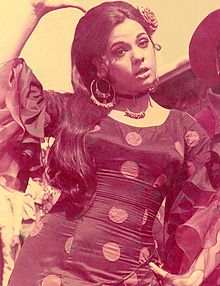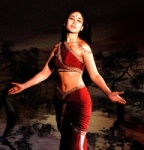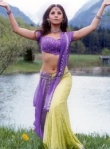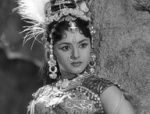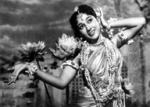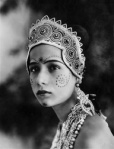May 3 is being marked as the official 100th birthday of Indian cinema. DG Phalke became known as the “Father of Indian Cinema” after the success of his film Raja Harischandra, screened in Mumbai, in May 1913. It wasn’t considered appropriate for women to work in film at this time so the female characters were played by male actors.
As 2013 marks its centenary year, I want to take a look at some of the actresses who have broken boundaries in Hindi cinema and hypnotised audiences over the decades.
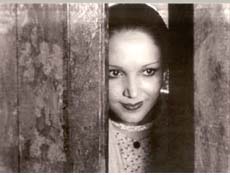
Devika Rani had an aura and style which audiences loved; her method of acting is studied and emulated to this day. Known as the “First Lady of the Indian screen”, she happened to work on set-design originally and became skilled in many aspects of film including production. She founded the Bombay Talkies film studio in the 1930s with her husband and became a mentor for upcoming actresses. Rani’s films were socially conscious and explored themes of ostracism, caste issues and the prospects of dancing girls. Achoot Kanya (1936) is an interesting film of hers to watch for its technical structure. The storyline is broken up and put together in a pulp fiction way. Much loved – Rani’s “shocker” moment is a scene in Karma (1933), which stunned audiences at the time for the 4-minute long kiss she plants on her co-star.
Selected list of her achievements/awards:
- Honoured by an invitation of B.B.C. London to act in the first television broadcast in Britain which was relayed throughout the country. She was also chosen to inaugurate the first B.B.C. broadcast on the short wavelength to India.
- In 1970 she was bestowed the first ever prestigious Dadasaheb Phalke Film Award, named after the “father of Indian cinema”.
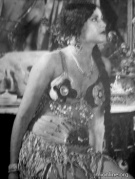
So famous, she is known by just her first name; Zubeida was one of the first women to venture into the male-dominated world of silent films in India. She appeared in one of the earliest versions of the classic Devdas (1937) and she enamoured audiences with her acting and dancing talent. In 1931 she also gained fans for her singing – she starred, sang and danced in the first Hindi film to have sound, Alam Ara, – which featured her real singing voice, and she subsequently became India’s highest paid female actress and their first female director. She helped to establish the film studio Mahalakshmi Movietone in 1934.
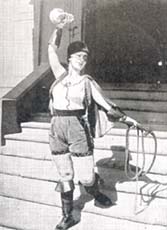
Australian-born Mary Evans moved to India as a child and worked as a circus performer. Her acrobatic skills led to her becoming one of the earliest actresses getting female leads in Hindi movies. She was credited as Fearless Nadia; she performed her own stunts and acted as a stunt-double for men. Nadia (she officially changed her name) could jump from running trains and performed stunts well in to her 50s. Her look from Hunterwali, or “Lady of the Whip” (1935), became iconic and one of her most popular films is Diamond Queen, about female emancipation and anti-colonialism. Fearless Nadia set the bar for using action films to combat themes of social injustice in Indian cinema.
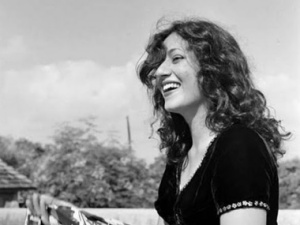
Madhubala is one of the most loved Indian actresses. With depth in her performances and grace in all her movements she stole hearts and scenes with her ethereal presence. Her body of work is one of the most versatile including supernatural thrillers, A-rated films, classic re-workings of Robin Hood and Jayne Eyre, and she had excellent comic timing in her comedies. Madhubala was revered for her sense of style – she was considered to dress Westernised which accentuated her sex appeal. She became the most bankable star of the early 50s and she continued to work hard throughout health scares (a hole in the heart) which led to her early death. Her role as a royal courtesan (dancer) in Mughal-e-Azam (1960), about a tragic love affair with a prince is regarded as her definitive role. It was the biggest grossing Hindi film until Sholay was released 15 years later and was re-released 35 years after Madhubala’s death to much success.
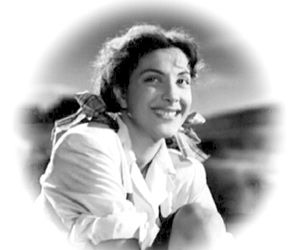
Nargis began acting aged six, in Talash-E-Haq in 1935 and continued to lead a hugely successful career spanning to the 1960s. She was known for dressing glamourously and for picking feisty characters to portray. To the apprehension of industry people and critics alike, she chose to portray Radha (a much older woman than herself), a peasant mother fighting for the rights of her land in Mother India (1957). The Oscar-shortlisted film is now considered the greatest work Bollywood has ever produced. Nargis later formed the Ajanta Arts Cultural Troupe – a group of entertainers – to perform for troops in Dhaka, after the Indo-Pakistani War of 1971. In the 70s she focused on social work and she became the first patron of the Spastics Society of India.
Selected list of her achievements/awards:
- The Nargis Dutt Memorial Cancer Foundation is established in her memory.
- The award for Best Feature Film on National Integration in the annual National Film Awards ceremony has been renamed the Nargis Dutt Award in her honour.
- The first film actress conferred by the Government of India with the Padma Shri title (the fourth highest civilian award).
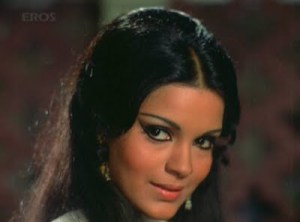
Zeenat Aman played various bold and sexy roles throughout the 1970s and 80s: a rebel hippie in Haré Raama Haré Krishna (1971), a prostitute in Manoranjan (1974), a Westernised revenge-seeking action heroine in Don (1978), a rape victim seeking justice in Insaaf Ka Tarazu (1980) and a spy disguised as a nightclub dancer in The Great Gambler (1979) are just a few. Her role as Rupa in Satyam Shivam Sundaram (1978) is still a talking point; as she broke boundaries by appearing nude in the film, which is full of symbolism about mortality- in a story about beauty being skin deep. She revolutionised India’s perception of women in many ways with her film choices and how she chose to style her self (hair/fashion). Even one of her latest films, Strings of Passion was an eye-opener in India because it includes the taboo subject of male rape in its storyline.
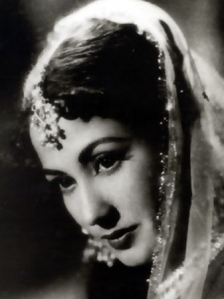
Meena Kumari has made a monumental impact on Hindi cinema for her most famous film Pakeezah (1972), which took 14 years to complete. Her personal issues, highly publicised, are present on screen, but it is also a film cherished for its gorgeous soundtrack and beautiful poetic monologues. Kumari herself was a poetess who recorded an album of her Urdu poems entitled I write, I recite accompanied with music. As a child star, she was the main breadwinner for her family and she is dubbed the “Queen of Tragedy” for her roles although she did play some heroines and light-hearted parts. One of her best-known roles was in Sahib Bibi Aur Ghulam (1962) which reflects her life story, and notably contains a progressive song sequence, Piya Aiso Jiya Main, alluding to women’s sexual desire.
Selected list of her achievements/awards:
- In 1962, she made history by receiving all three nominations for Filmfare’s Best Actress Award, for her roles in Aarti, Main Chup Rahungi, and Sahib Bibi Aur Ghulam.
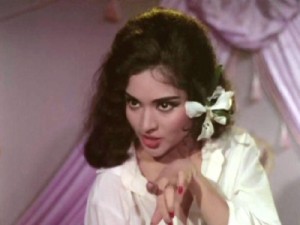
The first South Indian actress to have national success in Bollywood, Vyjayanthimala, also starred in Kollywood, Tollywood and Bengali films. She is most well-known for appearing as the character Chandramukhi to much acclaim in Devdas (1955) and her portrayal is considered one of the best Tawaif (courtesan of Mughal era) characters in Bollywood history. She also starred in Sangam (1953) which set the Bollywood trend of shooting song sequences abroad in exotic locations. In Jewel Thief (1967) she works alongside four more female leads Tanuja, Helen, Anju Mahendru and Faryal, all who were prolific at the time. Vyjayanthimala is also a much loved classical singer and has branched into politics. Recently, she lent her her name to films which raise money for children’s hospitals.
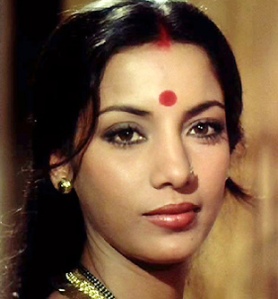
Shabana Azmi is as well known for being a fine actress as she is for being a social activist. A highly respected woman who is sought for Hindi productions and international projects in film, theatre and television, she made her mark in arthouse films, known as Parallel Cinema in India. She kick-started her Bollywood career with a role other actresses were afraid of – a married servant having an affair with a college student in Ankur (1974) and she hasn’t stopped since. Her progressive and experimental films garner her high praise, especially for her portrayals in true life stories, but some roles have led to threats on her life. For instance, she was threatened by social groups and even Indian authorities for her portrayal of a lesbian in Fire (1996). She speaks out against rape, denounces communalism in India, supports children in need and educates about Aids and funds the research. She is a political figure; a member of National AIDS Commission of India and the UN’s Goodwill Ambassador for India.
Selected list of her achievements/awards:
- Azmi’s performances in films of a variety of genres have earned her a record of five wins of the National Film Award for Best Actress.
- Fire won her international recognition with the Silver Hugo Award for Best Actress at the 32nd Chicago Film Festival and Jury Award for Best Actress at Outfest, Los Angeles.
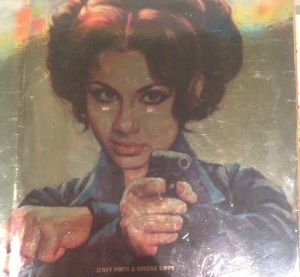
Sharmila Tagore, a Bengali actress, achieved success young. She became infamous in An Evening in Paris (1967), becoming the first actress in Hindi cinema to wear a bikini in a scene. It established her as a sex symbol in Bollywood and transformed female roles from that point on. She became legendary for her on screen chemistry with superstar co-stars and although she played romance really well, she could also pull out edgy characters. She was one of the highest paid Hindi actresses from 1966-1969 along-with Nanda and Waheeda Rehman and became the highest paid actress along-with Mumtaz from 1970-1975 – it was this period when audiences couldn’t get enough of seeing her pair-up on screen with Rajesh Khanna.
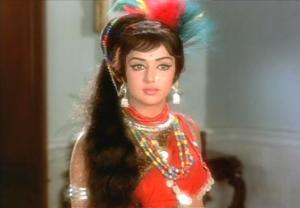
Hema Malini, established herself as a box office bombshell of the 70s. She could successfully slip from comedy to drama, from arthouse to mainstream and of course her classic Bharatanatyam dance moves made her mesmerising on screen. She took on challenging roles others shied away from and turned them into hits and noticeably performed in a lot of female-centric films. She is in a special league of Bollywood superstars who get to act in films with double-roles written for them. Seeta Aur Geeta (1972) is considered as one of her best comedy performances where she plays twins and nobody can forget her as the feisty Basanti in Sholay, (1975) which was a phenomenon. She still acts and directs in both film and television and is a successful business-woman. She is a choreographer who owns a dance school and in 2000 she became a chairperson of the National Film Development Corporation.
Selected list of her achievements/awards:
- She has been nominated ten times for Best Actress at the Filmfare Awards (seven of those were consecutive) and won in 1973 for Seeta aur Geeta.
- In 2000 she was presented with the Padma Shri award from the Government of India.
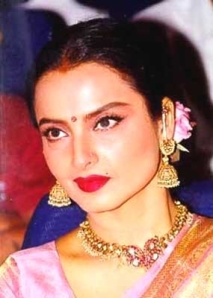
Rekha is known for reinventing herself and struggling to be taken seriously as an actress. Originally type-cast as a glamour girl and judged for not being as attractive as other actresses at the time, she did alter her appearance and was determined to succeed. She learned Hindi perfectly to compete for successful films and she continually chooses bold, strong, interesting, controversial and rejected characters to play – whether as a heroine or villain – in lead or supporting roles. Her portrayal of a gang-rape victim in the movie Ghar (1978) turned her in to one of the most successful actresses and she gave some of her best received performances in Parallel cinema. Rekha was one of the main women in heroine-led films of the 80s who continued to take on lead roles in the 90s and she continues to draw audiences.
Selected list of her achievements/awards:
- 1985: Best Hindi Actress in Utsav at the Bengal Film Journalists’ Association Awards.
- 1997: Lakme Timeless Beauty Award and Best Villain Award for Khiladiyon Ka Khiladi at the Star Screen Awards.
- 2006: Role Model of the year at the Stardust Awards.
- 2009: Raj Kapoor Pratibha Gaurav Puraskar by the Government of Maharastra for outstanding contribution to the Indian cinema.
- 2010: Padma Shri, from the Government of India.
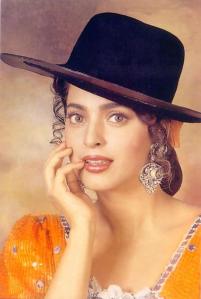
Megastar of the 90s, Juhi Chawla, is currently working in independent film and is the co-owner of production company Dreamz Unlimited with Shahrukh Khan and director Aziz Mirza. Some of her recent films have focused on taboo subjects such as child abuse and My Brother…Nikhil (2005), from new wave director Onir, was the first mainstream Hindi film to deal with Aids and same-sex relationships. After being crowned as the winner of the Miss India beauty contest in 1984, Chawla became so successful as an actress with her contemporaries Sridevi and Madhuri Dixit. Audiences flocked to watch her in comedies and romances.
Selected list of her achievements/awards:
- 2004: Best Supporting Actress for 3 Deewarein at Star Screen Awards.
- 2007: Star Gold Comedy Honours Award.
- 2008: Cultural Promotional Award from Cultural Awards.
- 2011: 13th London Asian Film Festival Best Actress Award for I Am,
- 2013: 3rd Petrochem GR8! Women Awards for Most Successful Actress
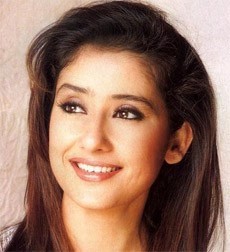
The Nepali-Indian actress Manisha Koirala is also a UNFPA Goodwill Ambassador and social activist. She promotes women’s rights organisations and works to prevent violence against women, and to prevent the human trafficking of Nepali girls for prostitution. A lot of her films themselves have been woman-oriented: Escape From Taliban (2003) was based on the true story of Sushmita Bandhopadhya who suffered torture in Aghanistan and Paisa Vasool (2004), which she produced, has been called Bollywood’s first ever chick-flick (it had no male lead and no love story). She has been successful in Hindi, Nepali, Tamil, Telugu and Malayalam films and was the lead actress in many Bollywood favourites of the 90s including 1942: A Love Story (1994), Bombay (1995), and Dil Se (1998).
Selected list of her achievements/awards:
- 1994: Smita Patil Memorial Award.
- 2001: Gorkha Dakshina Bahu Honour from the King of Nepal for achievement in the Indian film industry.
- 2004: Best Actress Award at the Bengal Film Journalists’ Association Awards for Escape From Taliban.
6 facts on Indian cinema/television’s progression
- Ardeshire Irani who made India’s first film with sound – Alam Ara (1931) – was also involved with the first colour film in Hindi, Kisan Kanya (1937).
- One of the boldest movies released under Bollywood Talkies, was Shiraz, (1929), about ill-fated, royal lovers. It was successful internationally and launched Seeta Devi’s career – she became very popular in the 20s and 30s.
- In the 1930s and 1940s, common themes were on female rights, hypocritical social injustices and caste prejudice.
- Since 2008 – American cinemas have begun screening Hindi films and Hollywood directors such as Steven Spielberg are beginning to associate with Hindi cinema.
- Nargis and Madhubala were at first the only two actresses to be commemorated with postage stamps in their honour. Now Nutan, Meena Kumari, Savitri, Leela Naidu, Devika Rani and Kanan Devi have been added to that roster.
- The popular actor Aamir Khan created and hosts the TV programme Satyamev Jayate which confronts unjust and corrupt practices in India. Around Six hundred million people watch the show.
